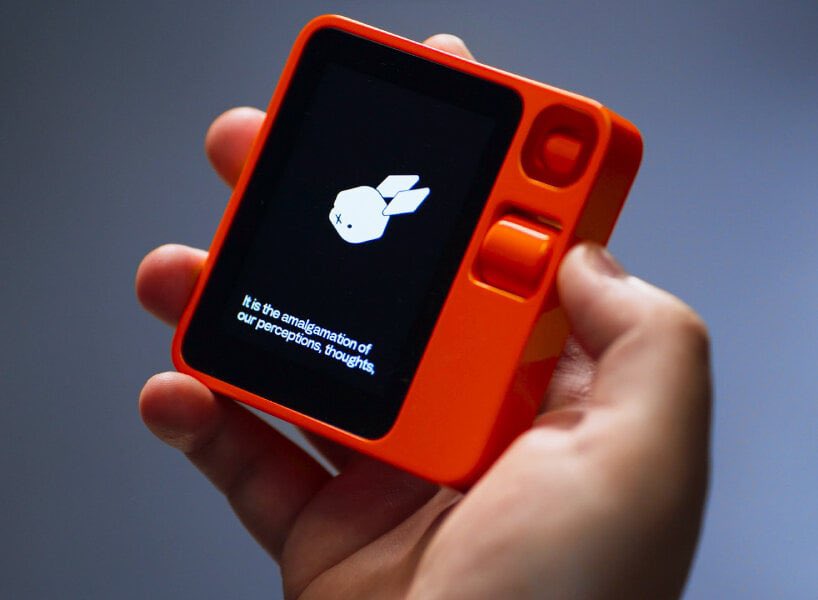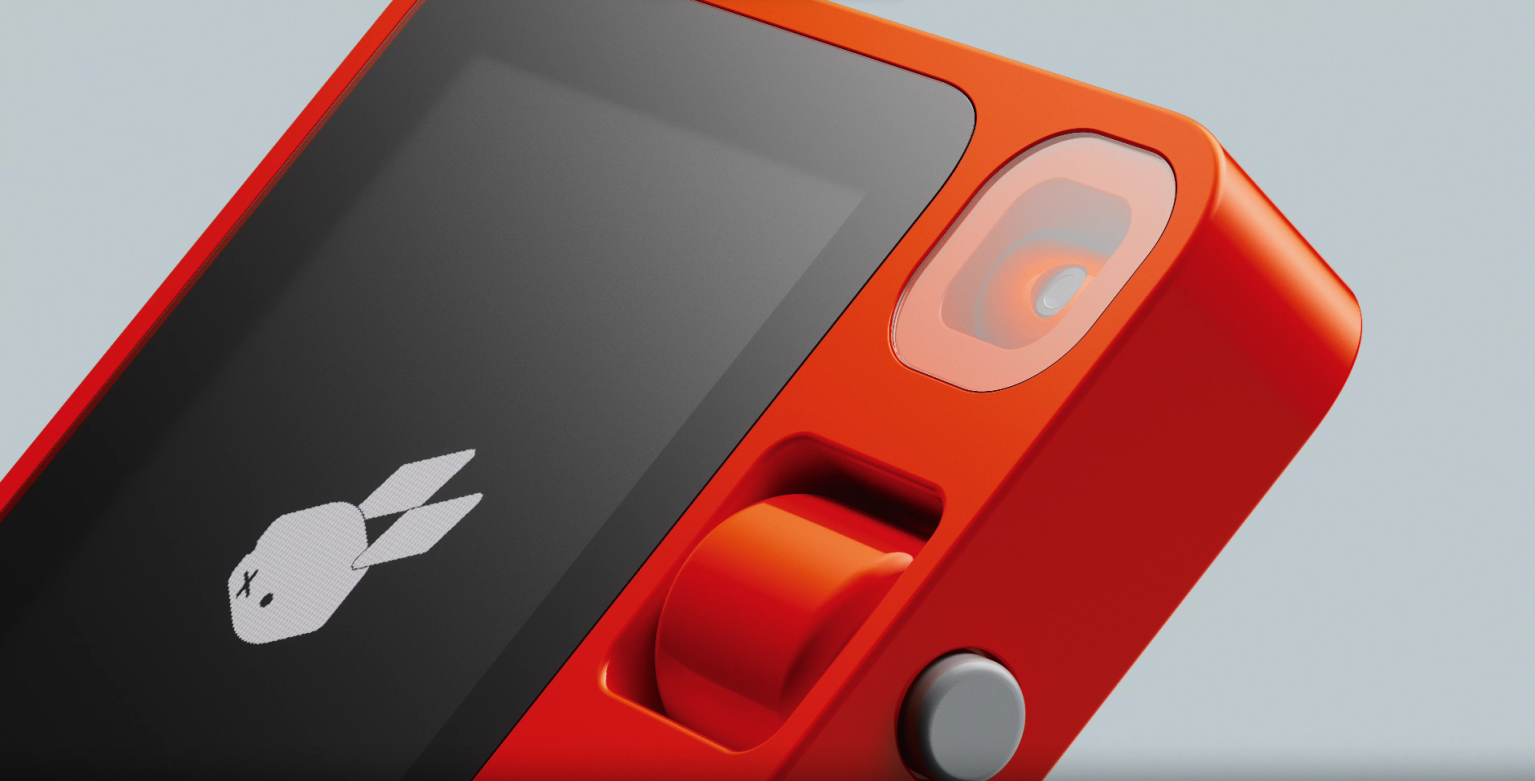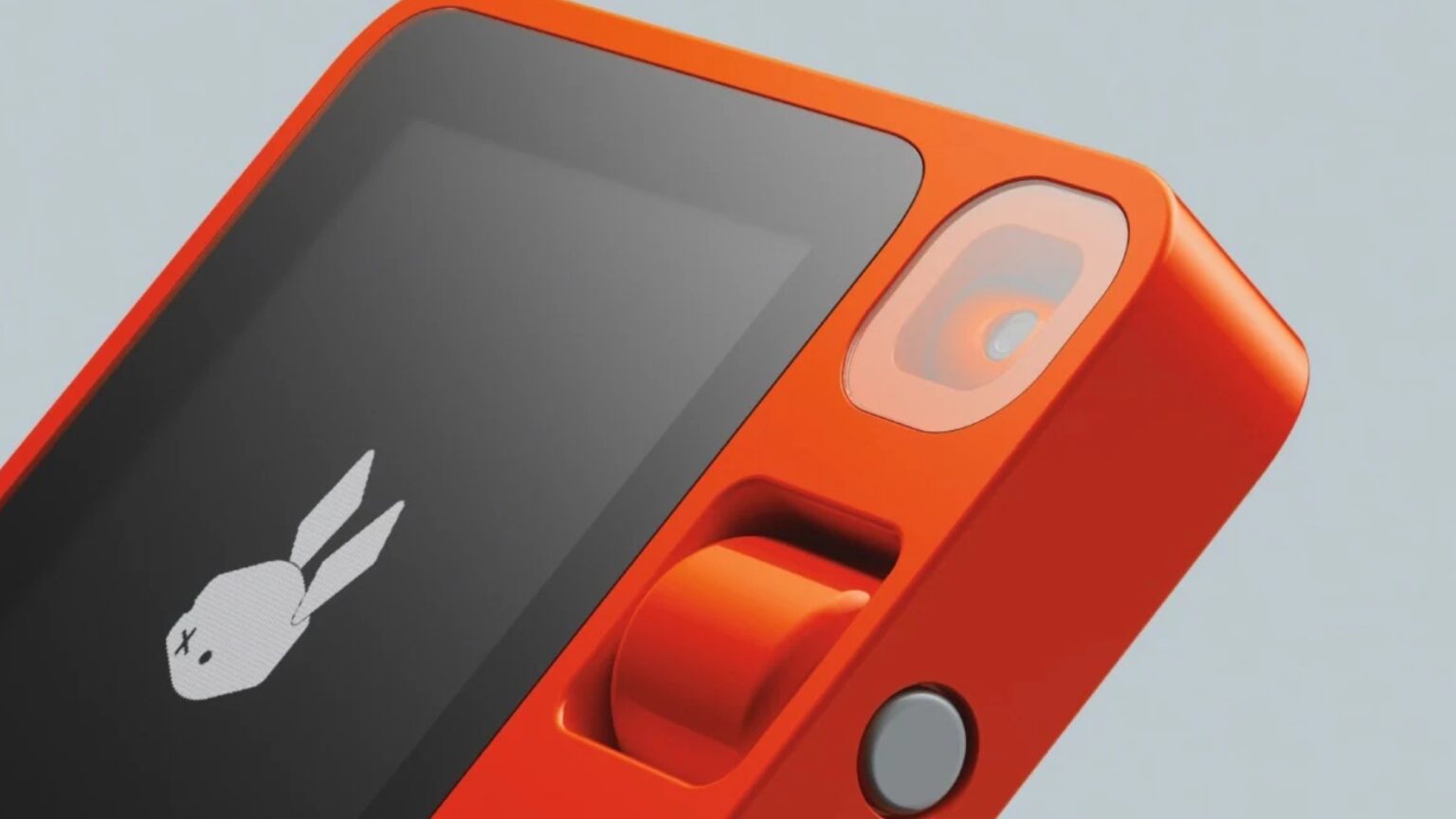AI startup Rabbit launched R1, its new AI-powered device that it hopes one day will replace the smartphone and potentially free users from an overload of apps. The device rivals Humane’s Ai Pin, but at a tiny fraction of the cost, just $199.
According to company founder and CEO Jesse Lyu, Rabbit sold all 10,000 units in its initial batch of the R1 device within 24 hours of opening pre-orders on its website, suggesting strong user interest.
This first batch will be delivered in late March, Lyu said. He added that the Santa Monica, California-based startup sold 30,000 more units in the ensuing 72-hour period, to be delivered in May.
The company says “no additional monthly subscription is required” after the purchase. But what is R1 exactly? Here’s what we know about Rabbit’s new piece of artificial intelligence hardware.
Also read: Humane Ai Pin Made Factual Errors at Demo Launch
Dumping the apps
With an estimated four million applications available for people to download on both the Apple App Store and Google Play Store, per some reports, there is no shortage of apps in the world today.
There’s almost an app for everything—from fitness to education apps, cooking to travel, and even apps for applying make-up to the face for women. Rabbit CEO Jesse Lyu thinks this is a problem.
“We’ve come to a point where we have hundreds of apps on our smartphones with complicated user interface designs that don’t talk to each other,” Lyu said during a presentation at the Consumer Electronics Show (CES 2024) in Las Vegas last week.
“As a result, end users are frustrated with their devices and are often getting lost. Our mission is to create the simplest computer, something so intuitive that you don’t need to learn how to use it.”
Rabbit’s R1 device, a small, square-shaped AI-powered gadget half the size of a regular smartphone, is designed to learn how to use all these individual apps on behalf of users.
That way, Lyu says, people have more time to do other things and can, for example, simply tell the device to order an Uber or order pizza online with a press of the button and a voice command.
It’s like a walkie-talkie, the CEO said. Users don’t have to interact with apps on R1 directly. Instead, you press and hold a button on the side of the gadget and tell it what you want to do, like play music on Spotify, just as you would with a walkie-talkie.
“Large Language Models, like ChatGPT, showed the possibility of understanding natural language with AI,” said Lyu, who previously founded the AI firm Raven Tech, later acquired by Baidu.
“Our Large Action Model (LAM) takes it one step further: it doesn’t just generate text in response to human input—it generates actions on behalf of users to help us get things done,” he added.

How Rabbit R1 works
Rabbit’s proprietary LAM model removes the need for people to download and use several apps on their devices. R1 is luminous orange-red with a 2.88-inch touchscreen display that takes up much of its front. The gadget weighs 115 grams and can fit into the palm.
An analog scroll wheel sits next to the screen, which you can use to navigate through the functions. On the right side of the wheel is a button that you can push and hold when you want to talk to your R1. Above the scroll, there’s a camera that rotates 360 degrees.
Dubbed the “Rabbit Eye,” the camera is capable of making video calls, taking selfies, and taking other pictures. You can close the camera function by facing the device down when not in use. R1 comes with 4GB of memory, 128GB of storage, and a battery that the firm claims is meant to “last for all-day usage.”
Rabbit developed the hand-held R1 device in partnership with Swedish design company Teenage Engineering. The startup built its own operating system, Rabbit OS, which includes a web portal known as “Rabbit Hole.”
People can use this portal to choose apps they want to connect to R1, like Amazon, as long as they have a WiFi or mobile data connection. Once you have done this, you can tell R1 by holding that push-to-talk button to help you with things like “filling a virtual grocery store cart or completing transactions at check-out.”
“We never save your username and password, and we don’t track your data,” Jesse Lyu clarified. “The authentication happens on the respective apps.”
“We wanted to find a universal solution, just like large language models. How can we find a universal solution to actually trigger our services, regardless of whether you’re a website, an app, or whatever platform or desktop?” he quipped.

Doubts over R1 utility
Rabbit’s R1 can do a lot more than just play music on Spotify or call Uber rides. During his demo launch at CES, Lyu prompted the AI companion to plan a family vacation to the UK, and it replied with a detailed itinerary, including flight options and hotels. He could book any of these services with a tap on the screen.
To do this, Lyu said that Rabbit trained its proprietary AI model to observe actions performed by humans as they interact with apps currently supported by the R1 device. After learning these actions, the device could then replicate the same processes.
“In the near future, [Rabbit OS] will also feature an experimental capability that allows users to train their own ‘rabbits’ to perform specific tasks on niche apps and workflows,” he detailed.
Users will just need to point their R1 devices at their phones or personal computers while using them. However, some people have questioned the utility of the R1 when they have smartphones that already perform many, if not all, of the things the R1 claims to do.
“Why not an app?” some observers queried. In response, Lyu wrote on X: “Apps are relatively easy to build and easy to copy too, but super hard on maintenance and create customer loyalty. We are talking about having at least 2 versions, iOS and Android, and these platforms are fundamentally different.”

R1 versus Humane Ai Pin
In a brief comparison, Rabbit R1 and Humane’s Ai Pin look similar in shape and also in that both operating systems are free of apps—Rabbit OS and Cosmos blockchain, respectively.
Both devices are AI-powered and focused on streamlining user queries by automatically directing them to third parties instead of hosting the apps directly on their own platforms. But the R1 is a pocket device, and the Ai Pin is a wearable device that’s mostly attached to clothing, on jacket lapels, or on front pockets.
One major difference is in the price: R1 costs just $199 without any other subscription required, while the Ai Pin costs three times as much at $600 plus a monthly subscription of $24. R1’s more competitive pricing may explain why the gadget has sold 40,000 units within four days of launch.
For context, iPod sold 125k in the first quarter, iPhone 270k in the first 48 hours, and iPad 300k in the first day. https://t.co/3Q4QnlnF51
— Daniel Gross (@danielgross) January 16, 2024
As seen in the tweet above, American entrepreneur Daniel Gross added some context to the R1 sales, drawing comparisons with Apple’s iPod, iPhone, and iPad sales within the first few days of their launch.
The Ai Pin is due to be released later this March quarter, but it is not clear how many of the items have been sold in pre-orders just yet.









 and then
and then